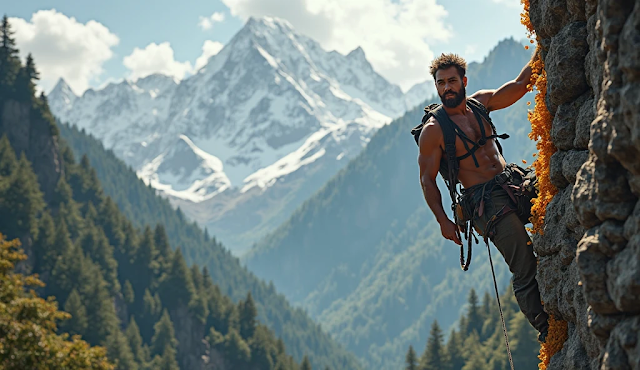By [InNepal] | April 13, 2025
Introduction: Shattering Boundaries in the Death Zone
On May 22, 2019, Nepalese-British mountaineering legend Nirmal “Nims” Purja achieved what many deemed impossible: summiting Mount Everest (8,848 m) and Lhotse (8,516 m) within a staggering 24-hour window. This feat, part of his groundbreaking Project Possible 14/7, redefined the limits of high-altitude mountaineering and cemented Purja’s legacy as one of the most audacious climbers in history. This blog post delves into the story behind his record-breaking ascent, the challenges faced, and its lasting impact on the world of adventure sports.
Who Is Nirmal Purja? The Man Behind the Legend
Born in Nepal’s Myagdi District in 1983, Purja grew up in poverty before joining the British Army’s Gurkha Regiment in 2003. His military career later led him to the elite Special Boat Service (SBS), where he honed his resilience and strategic mindset311.
Key Milestones:
2014: First eight-thousander summit (Dhaulagiri)3.
2017: Led the Gurkha Expedition to Everest, commemorating 200 years of Gurkha service3.
2019: Launched Project Possible 14/7, aiming to climb all 14 eight-thousanders in seven months211.
Purja’s military discipline and Himalayan roots fused into a relentless drive to push mountaineering into uncharted territory.
The 24-Hour Everest-Lhotse Challenge: A Timeline of Triumph
Phase 1: Everest Summit (May 22, 2019)
7:00 AM: Purja and his team reached Everest’s summit after departing Camp 4 the previous night8.
Conditions: Heavy traffic due to a narrow weather window delayed progress, but Purja navigated the crowds using bottled oxygen and Sherpa support112.
Phase 2: The Descent and Dash to Lhotse
10:15 AM: Purja began descending Everest, reaching the South Col (7,900 m) by midday.
Strategic Move: Instead of returning to Base Camp, he refueled and immediately traversed the Lhotse Couloir, a steep, avalanche-prone ice chute311.
Phase 3: Lhotse Summit (May 22–23, 2019)
10:00 PM: Purja summited Lhotse just 10 hours and 15 minutes after leaving Everest’s peak, shattering the previous 20-hour record23.
Key Factor: Use of pre-fixed ropes and supplemental oxygen allowed rapid transitions between peaks11.
The Aftermath
Purja descended to Base Camp and immediately helicoptered to Makalu, summiting it on May 24—completing three 8,000-meter peaks in 48 hours111.
Challenges and Controversies: The Price of Speed
1. Overcrowding on Everest
A viral photo taken by Purja during his ascent revealed a “traffic jam” of climbers on the Hillary Step. Critics blamed commercial expeditions for risking lives, but Purja defended climbers:
“All of them had sacrificed to reach their dream… The rope-fixing delays and weather caused the congestion” 12.
2. Ethical Debates
Purja’s reliance on bottled oxygen, Sherpa teams, and helicopters sparked criticism from purists. Wing Commander Amit Chowdhury of the Indian Mountaineering Foundation dismissed speed ascents as “sensationalism”2.
Purja’s Counterargument:
“If I wasn’t using oxygen, I couldn’t have saved others” 11.
During Project Possible, he rescued stranded climbers on Annapurna and Kangchenjunga, highlighting the humanitarian value of his approach111.
3. Physical and Mental Toll
Altitude Risks: Rapid ascents increase exposure to cerebral edema and frostbite.
Logistical Mastery: Purja’s military precision enabled back-to-back climbs, but required flawless coordination with support teams311.
Legacy: How Purja Transformed Mountaineering
1. Records and Recognition
Fastest Everest-Lhotse-Makalu Triple: 48 hours (2019)3.
First Winter Ascent of K2: Led a Nepali team in 2021 without supplemental oxygen312.
Global Acclaim: Featured in Netflix’s 14 Peaks: Nothing Is Impossible (2021)3.
2. Empowering Nepali Climbers
Purja challenged the stereotype of Sherpas as mere support staff. Maninder Kohli of the Indian Mountaineering Foundation noted:
“His feats spotlight Nepali climbers as mountaineers in their own right”2.
3. Inspiring a New Generation
By proving that “impossible” is a mindset, Purja inspired climbers like Adriana Brownlee and Jenn Drummond, whom he later guided on Everest8.
Aspiring Adventurers
Focus: “Everest-Lhotse 24-hour summit,” “Nirmal Purja records,” “Project Possible 14/7.”
Visual Content: Embed Purja’s viral Everest traffic photo and footage from 14 Peaks.
Local Impact: Highlight how buying Lokta paper or supporting Nepali-owned expeditions sustains communities.
Conclusion: Beyond Possible
Nirmal Purja’s 24-hour Everest-Lhotse double summit was more than a personal triumph—it was a paradigm shift in high-altitude mountaineering. By blending military discipline, cutting-edge logistics, and unwavering compassion, he redefined what humans can achieve in the Death Zone. As climbers continue chasing faster times, Purja’s legacy endures: a reminder that limits exist only to be broken.
Explore More:
Watch 14 Peaks: Nothing Is Impossible on Netflix.
Follow Nims Purja on Instagram (@nimsdai) for updates on his 2025 expeditions.






0 Comments